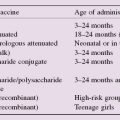Virtually all immune responses involve cells communicating with each other – for instance T cells with B cells (see Figs 18 and 19) or T cells with macrophages (see Figs 18 and 21) – one cell sending signals to another to divide, differentiate, secrete antibody and so on. Cell–cell signalling can occur in two ways: the cells may come into contact, allowing receptor–receptor interactions (for some simple examples see Fig. 3) or a cell can secrete signalling molecules that travel to another cell, often in close proximity but sometimes at a distance.
Molecules that carry out this signalling function are known as cytokines. At least 30 of these are known, and the list can be extended if one includes every cell-derived molecule that acts on another cell. The term is usually restricted to molecules produced by cells with recognized immune function, such as lymphocytes, macrophages, dendritic cells, NK cells, even if some of them can also be made by, or act on, non-immunological cells. Cytokines are proteins of fairly low molecular weight (generally in the range MW 10 000–80 000) and they are completely distinct from that other major population of soluble immunological molecules, antibody, because they do not show any specificity for antigen. Thus, predominantly the same cytokines would be involved in the immune response to measles, tuberculosis and malaria, unlike the situation with antibody.
For practical purposes, the main cytokines are classified into families (right), named after one of their functions, although sometimes the terminology is none too clear; e.g. one of the most important macrophage activators is called gamma interferon (IFNγ) because it, and the other interferons, were discovered through their effect in interfering with virus growth. In the same way tumour necrosis factor (TNF), despite its promising name, is chiefly involved in inflammation – and indeed can actually promote cancer. Most of the cytokines are now available in pure form, and are finding their way into medicine, although, as is the case with TNF, it can sometimes be more important to block their action.
Cytokine receptors are also classified into corresponding families, based on shared structure. These are shown in the figure (centre) with the intracellular pathways (left) by which cytokine–receptor binding leads to biological function. The following chapter describes some of these functions.
TNF
Stay updated, free articles. Join our Telegram channel

Full access? Get Clinical Tree




